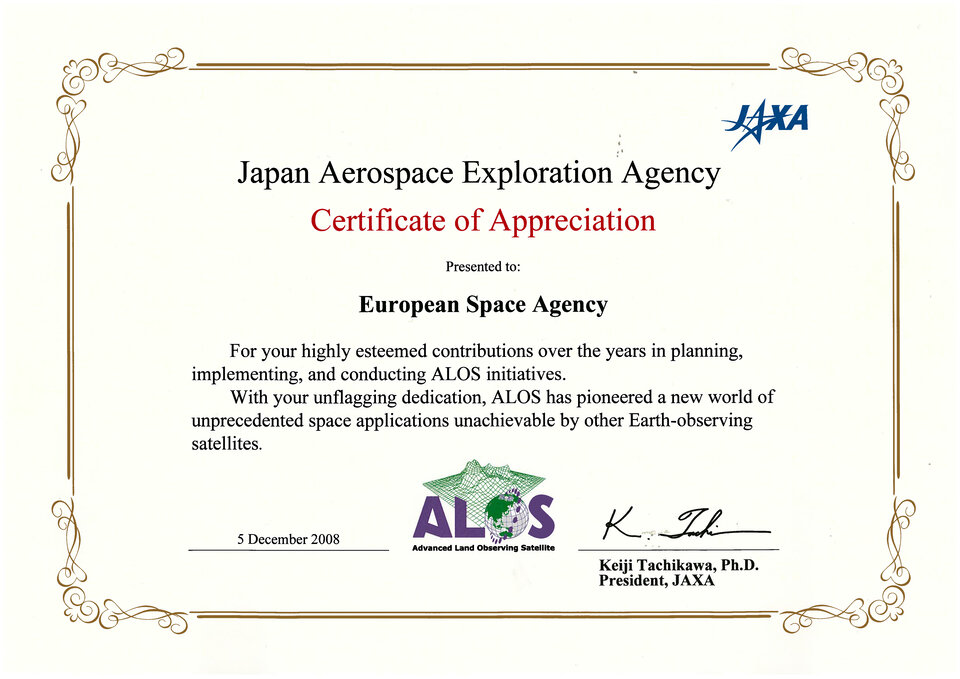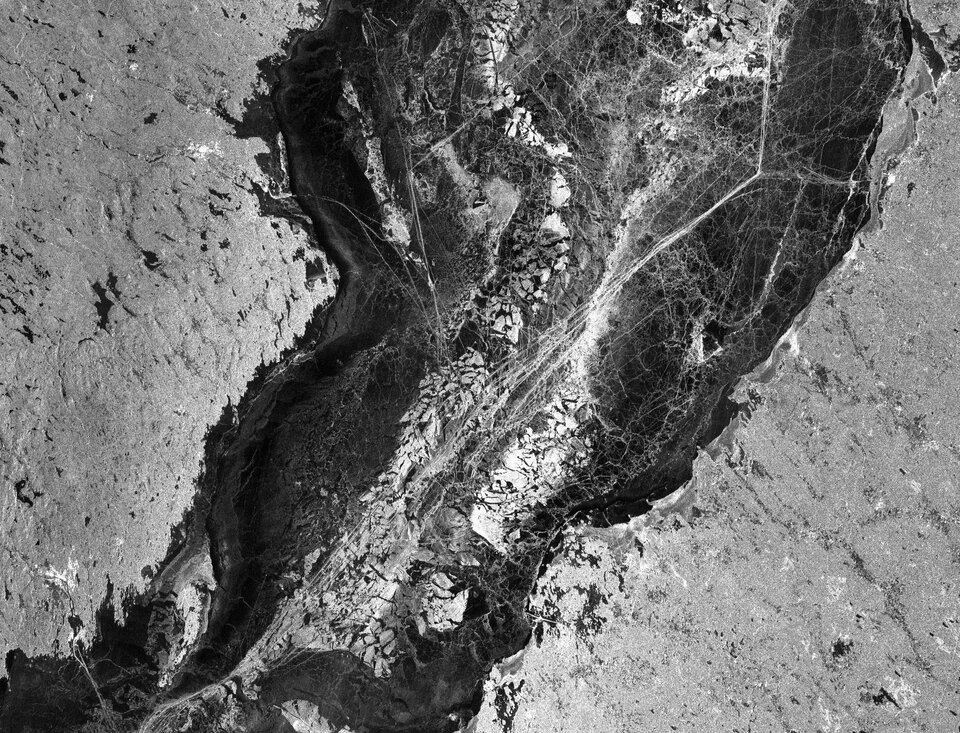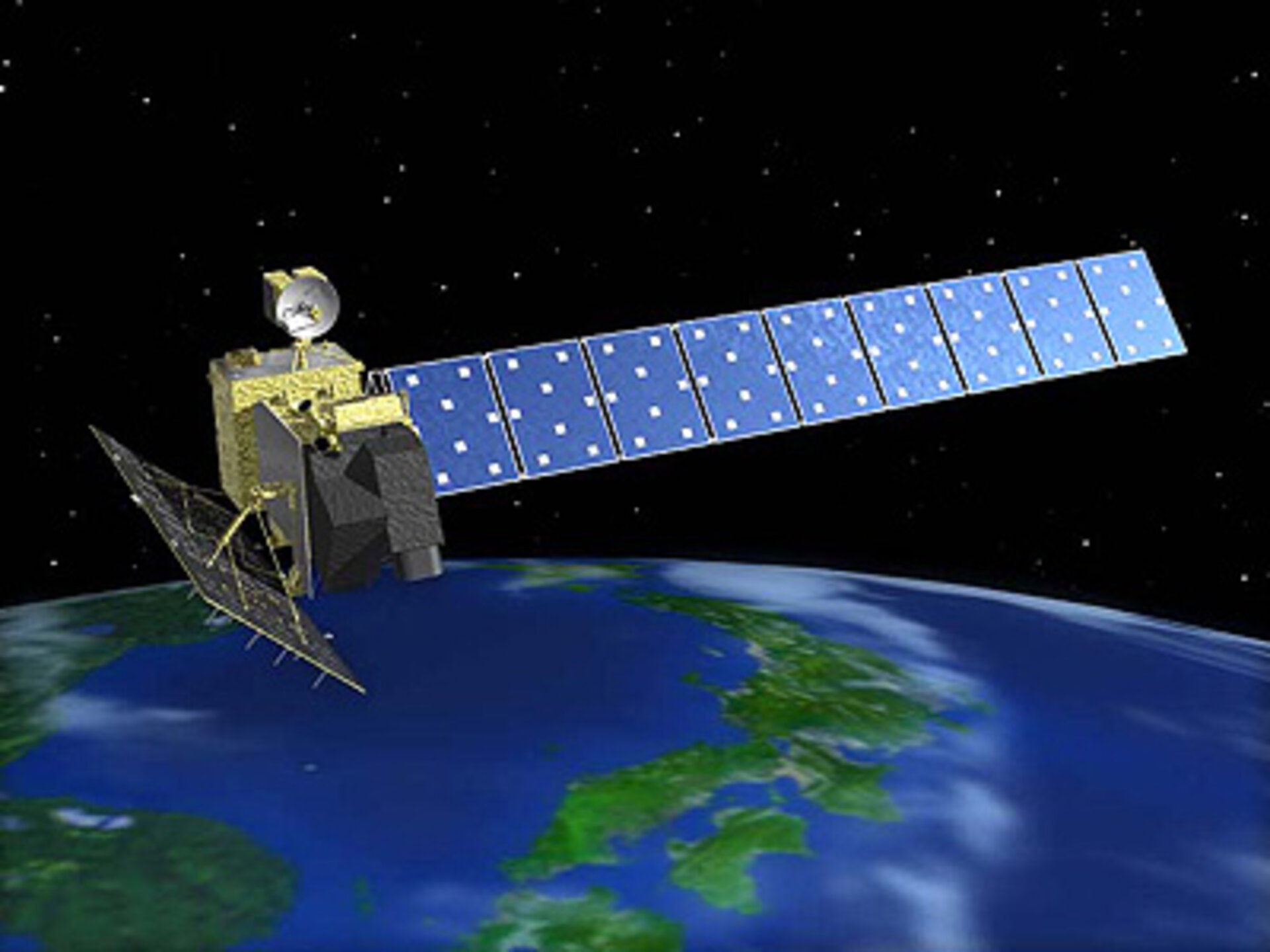ESA awarded by Japan Aerospace Exploration Agency
Based on a cooperative agreement, ESA has been delivering data from ALOS – Japan's four-tonne Earth Observation satellite – to users across Europe and Africa since its launch three years ago. ESA’s efforts have been recognised by the Japan Aerospace Exploration Agency with an award of appreciation.
Dr Yasushi Horikawa, Executive Director of the Japan Aerospace Exploration Agency (JAXA), wrote to ESA to express appreciation for its "significant contribution over the last 8 years in the planning, implementation, and operation of the ALOS Data Node framework."
The agreement between the two space agencies puts ESA in charge of the ALOS European Data Node (ADEN), delivering the satellite’s data to scientific and operational users across Europe and Africa.

Within the ADEN network, ESA, JAXA and other partners cooperate to produce a wide range of environmental datasets. Applications include the domains of forestry, global carbon monitoring, oceanography, sea-ice monitoring, agriculture and vegetation monitoring, topography and disaster mitigation.
"This framework has proven to be a highly effective and efficient mechanism for realising the vision of a global, distributed data system for a new generation of Earth Observing missions – a new paradigm for coordination among space nations," Horikawa wrote.

Volker Liebig, ESA’s Director for Earth Observation Programmes, said: "ESA is very honoured to be recognised for its participation in the ALOS Node cooperation. We are looking forward to continuing our successful collaboration with JAXA on future space missions."
ALOS (Advanced Land Observing Satellite), launched on 24 January 2006 from the Tanegashima Space Centre in Japan, was initially intended to operate for three years. However, given the overall standing of the satellite and the quality data it is delivering, JAXA has extended its mission until 2010 and has begun preparations for an additional extension until 2013.
ESA is supporting ALOS as a 'Third Party Mission', which means ESA utilises its multi-mission European ground infrastructure and expertise to acquire, process and distribute data from the satellite to its wide user community. To date, ESA has delivered ALOS data to more than 270 research and application projects, serving some 500 users.

A wealth of new applications has been developed over the last three years using data from ALOS’ three onboard instruments.
Its Phased Array type L-band Synthetic Aperture Radar (PALSAR) can acquire observations during both day and night and through any weather conditions. PALSAR data are also complementing ESA’s radar missions, such as Envisat and ERS-2, and the European National X-band missions, such as the German TerraSAR-X and Italian Cosmo Skymed constellation.
The Panchromatic Remote-sensing Instrument of Stereo Mapping (PRISM) onboard ALOS can observe selected areas in three dimensions, down to a high 2.5-metre spatial resolution. The Advanced Visible and Near Infrared Radiometer type-2 (AVNIR-2) charts land cover and vegetation in visible and near infrared spectral bands.

European and international users recently delivered results of ALOS data exploitation at the 2nd PI Symposium organised by ESA with JAXA and other Node partners.
"The results presented show that the investment of the ESA Member States for ALOS as part of ESA’s Earth Observation Envelope Programme have brought a significant benefit for the European user community for a large variety of applications," ESA’s Third Party Mission Manager Bianca Hoersch said.
The development and implementation of the ALOS cooperation between JAXA and ESA has provided a good framework and very promising perspectives for cooperation with JAXA on future Earth Observation missions. Currently, JAXA and ESA are setting up a new cooperation agreement for JAXA’s GOSAT mission, which was launched earlier today.
GOSAT’s mission is to observe the concentration of greenhouse gases, including carbon dioxide and methane, which cause global warming.







